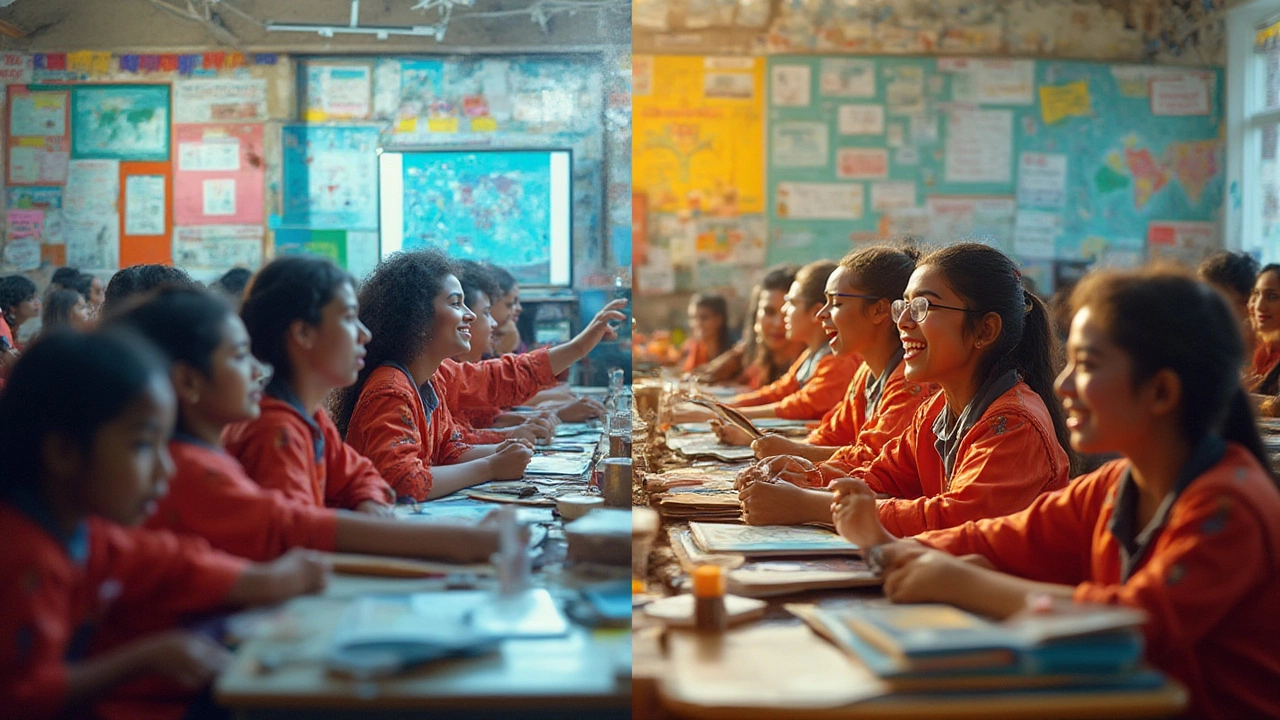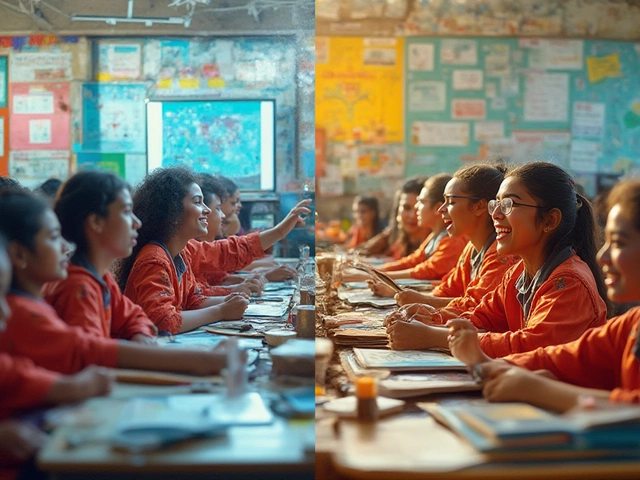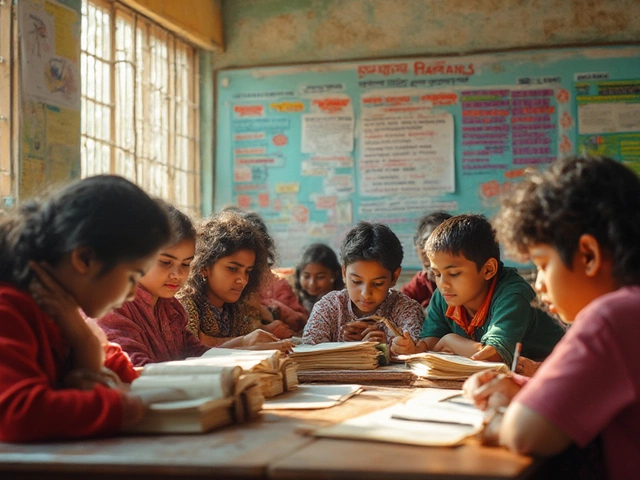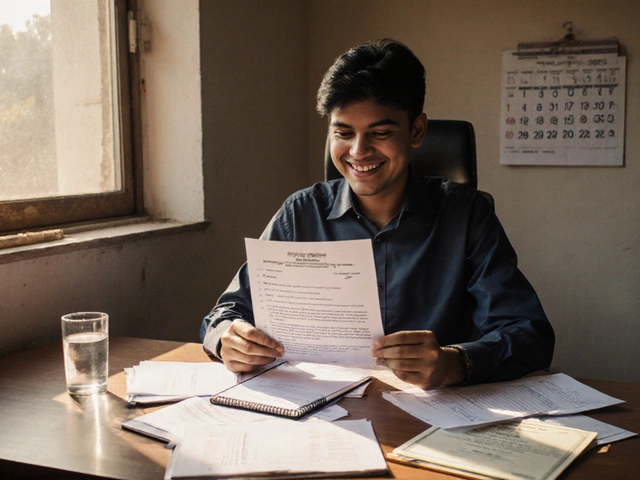What if the way you learned in school really shaped who you’d become? In the USA, some kids play with robots during class, while in India, many students compete hard for every grade. The question, "Is the education system in the USA better than India?" sparks heated dinner arguments, floods of YouTube explainers, and a never-ending TikTok debate. But what does better even mean—more jobs? Smarter kids? More freedom to choose Art over Accounting? Let’s get behind the stereotypes, look at actual facts, and break down what makes each country’s education system unique.
Cultural Roots: Why Schools Feel So Different
If you step inside a school in New York and then jump straight into a classroom in Mumbai, you’ll notice the vibe changes instantly. American classrooms often have small groups talking, teachers being called by their first names, and a lot of projects using things like cardboard and colored markers. Indian classrooms are often formal, with students standing up to answer, uniform blazers in humid heat, and everyone focused on blackboards filled with notes.
This isn’t just surface-level. The USA values individuality and creativity, and kids are encouraged to share opinions, sometimes even challenge teachers. In India, respect for authority and collective effort are core. Here, memorization and discipline are prized, and students are trained to score high in exams which can be a real make-or-break for their futures.
Cultural history sets the scene—think of the American Dream versus the pressure cooker of India’s hyper-competitive job market. Parents in India often see education as the one ticket to success, so kids face intense expectations. There’s a saying shared among Indian families: "Padho, likho, bada admi bano!" (Study, write, become someone big!)—and they mean it.
Freedom of choice? In the USA, students pick electives—Drama, Computer Science, even Marine Biology, which isn’t something many Indian schools would dare to offer for teenagers. In India, science, commerce, and arts streams are chosen in high school, and that pick can lock you in for life. Changing paths is rare, which can be stifling or clarifying, depending on who you ask.
Cultural pressure in India creates toppers—the famous term for bright, high-scoring students. In the USA, the system sometimes pushes kids to spread out, try sports, and experiment with learning styles. That’s not accidental, it’s built into how each society thinks about success and happiness.
Structure: School Years, Curriculum, and College
Here’s where things get super technical. In the USA, kids start kindergarten at age five and sail through 12 grades: elementary, middle, and high school. Every school year has a mix of core subjects and electives. By 12th grade, students can take Advanced Placement (AP) or International Baccalaureate (IB) classes for college credits.
India’s system starts with pre-primary and primary, then secondary (Class 10 board) and higher secondary (Class 12 board). Class 10 and 12 board exams are colossal—families move houses, siblings get sent to stay with relatives, and relatives call every week to check in. Board results decide the next steps: which college, which stream, and sometimes even which city you move to.
Colleges are another story. The USA has community colleges, liberal arts schools, and huge universities like Harvard (which charges over $50,000/year for tuition). Competition is intense, but the system allows multiple entry points. You can even switch majors halfway through college.
India’s college game is rigid—and fierce. Admission to the Indian Institutes of Technology (IITs) or medical colleges involves mind-bending entrance exams like JEE or NEET. Lakhs of kids compete for a few thousand spots. A typical Indian college lecture has hundreds of students packed in old auditoriums, while an American liberal arts college class might have just 20.
The curriculum? The USA uses continuous assessment—quizzes, essays, classwork, group presentations. Indian schools rely heavily on final exams. Collaboration is common in the USA, but Indian students often work solo. “Our system is examination-oriented rather than knowledge-oriented,” said Dr. D. Purandeswari, former Union Minister for Human Resource Development.
| Parameter | USA | India |
|---|---|---|
| Average Student-Teacher Ratio | 16:1 | 30:1 (sometimes above 40:1 in public schools) |
| Global University Rankings (Top 100 by QS 2025) | 31 | 3 |
| Annual College Fees (Avg.) | $10,000-$50,000 | $300-$2,000 (except private/foreign-affiliated) |
| Classroom Hours per Week (School) | 30-35 | 35-40 |
| Elective Choices in High School | 30+ | 3-5 |
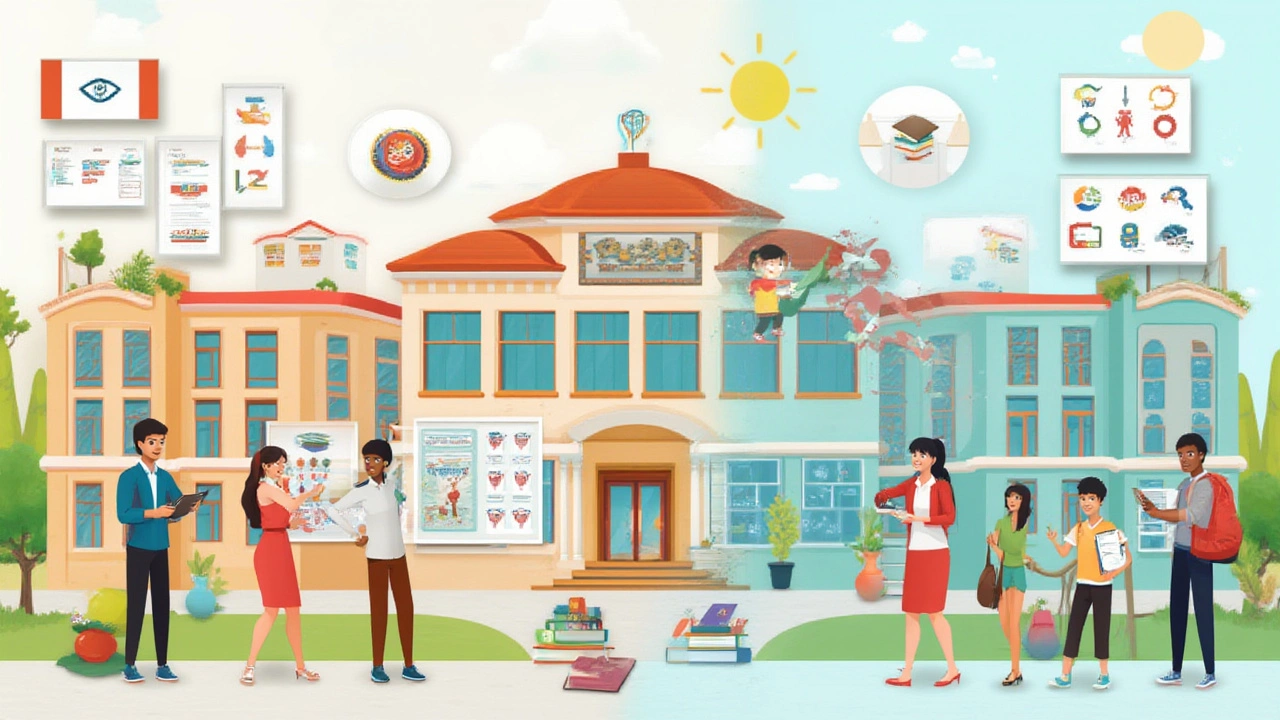
Teaching Methods and Technology in the Classroom
If you’re into active learning, the USA scores higher. Teachers use digital whiteboards, students code tiny drones, and assignments happen on ChromeBooks. According to the National Center for Education Statistics (NCES), over 90% of public schools in the USA use the internet for teaching, and many classes run on Google Classroom or Edmodo. Group work, debates, and open-book tests are part of the school DNA.
In India, especially in public schools, the blackboard isn’t going anywhere soon. Chalk and talk dominates. Many teachers struggle with oversized classes, making it tough to innovate. Tech is coming—the government launched “Digital India” and partnerships with platforms like Byju’s are pushing smartboards and tablets, but huge gaps remain, especially outside big cities.
Homework? American students don’t escape it, but it’s often application-based: “Design your own city to learn about geometry.” In India, homework can be memorizing chemical equations and writing 500-word essays—mostly copying from the textbook.
Special learning needs get more attention in the USA too. Individual Education Plans (IEPs) are common, and schools have counselors and psychologists. In India, awareness and support for learning disabilities are improving but still rare in government schools.
But don’t count Indian students out—they often shine in Math Olympiads and Science Fairs worldwide. Many go on to ace the SATs and shine in US colleges, especially in education system USA.
Assessment, Pressure, and Life Beyond the Classroom
If you ask a student in Bangalore if they have a social life during board exam season, they may just laugh—and then get back to studying. Pressure is the daily reality for millions. The stakes are sky-high in India; one wrong answer on an entrance test and dreams of being a doctor or engineer can spiral. According to India Today, over 33% of Indian students have faced anxiety during major exams.
In the USA, standardized tests like SAT or ACT exist, but colleges look at everything: extracurriculars, essays, even volunteer work. Social and emotional skills aren’t just buzzwords—many schools grade you on cooperation and self-discipline. So the stress isn’t zero, but it’s a different flavor. Test stress exists, but college rejections rarely spell doom for an entire career path.
American high schools are full of football games, proms, school bands, Model UN, and drama clubs. Indian schools are catching up with fests, science quizzes, and sports days, but often these are squeezed out by tuition classes and “coaching,” which have become a parallel, shadow education system costing families billions.
A Harvard study found that US students spend twice as much time on extracurriculars as their Indian counterparts. Both countries are trying to address student well-being, but the USA is ahead with on-campus clinics, support groups, and mental health resources. In India, awareness is growing, but counseling is still considered a luxury in most schools.
“The American system values not just academic achievement, but the whole individual—the artist, the scientist, the athlete,” says Dr. Shalini Singh, author of ‘Learning Across Frontiers’.
Both systems have their heroes and heartbreakers. If you want to be a Google engineer, India will coach you hard in math and science basics. If you dream of producing indie films, US schools may offer a smoother, more creative ride.
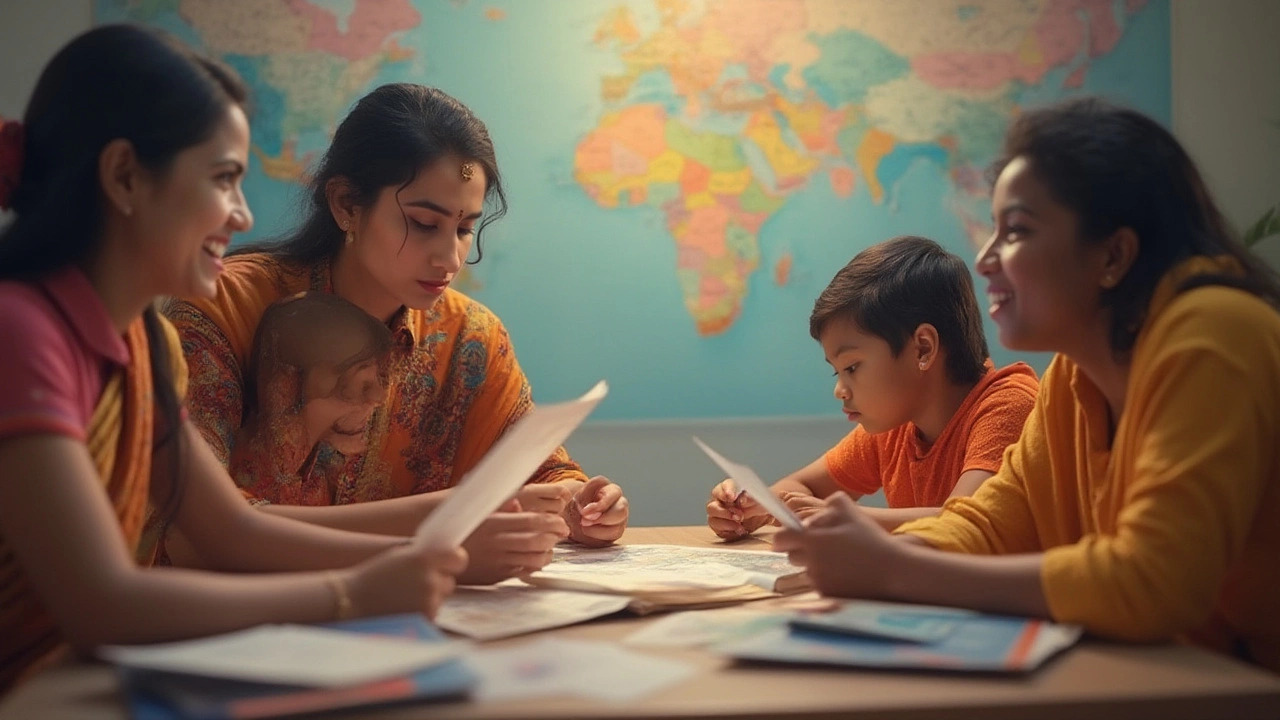
Who Wins? Tips for Students and Parents Choosing Between USA and India
This isn’t a one-size-fits-all answer. The US education system bursts with options, flexibility, and clubs for nearly every type of student. It’s a great match if you’re self-motivated, creative, and love switching gears. But it’s pricier, competition at the top is brutal, and not every student gets equal support—there are big gaps between rich and poor districts.
India’s system wins if you’re disciplined, academic, and want clear goals. It’s cost-effective and famous for strong math and science programs. But the rote learning sometimes kills curiosity, and the pressure can burn out some very bright kids before they hit adulthood.
If you’re deciding where to send your kid, start by answering these:
- Does your child thrive in structure, or do they shine with more freedom?
- Are you ready for heavy reliance on private tutors (India) or after-school activities (USA)?
- What resources do you have for college fees and school extras?
- Is your child aiming for a global career or something close to home?
For Indian students aiming to crack US universities, get used to project-based learning and build extracurriculars into your profile early. For American families looking at Indian boarding schools, be ready for more discipline and fewer creative liberties. Try summer programs or exchange semesters before committing to one country—think of it like trying on a new pair of shoes before you buy.
The secret no one tells you? Both systems produce rockstars and dropouts. The best education is the one that fits your kid’s mind, dreams, and spirit. And sometimes, mixing things—say, studying in India till high school and switching to the USA for college—can offer the best of both worlds. The world is smaller now; educational borders blur every year. Don’t get caught in just ranking systems. Talk to current students, try out open courses online, and listen to your gut—and your child’s too.
